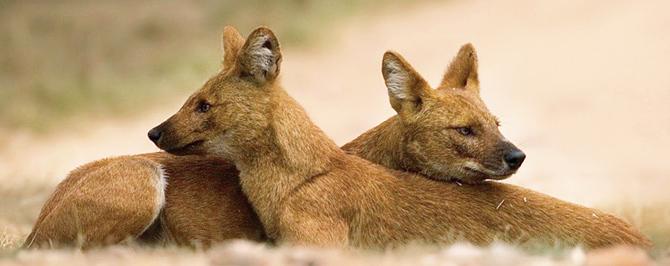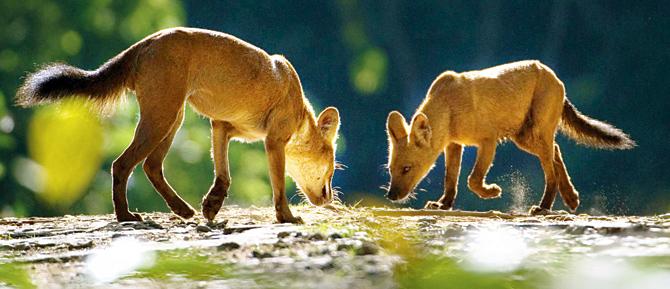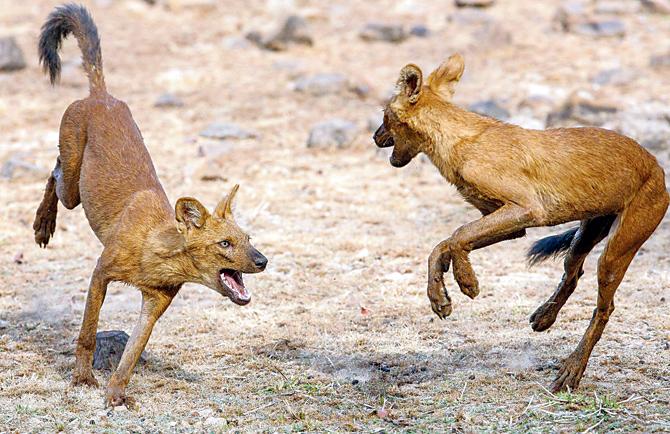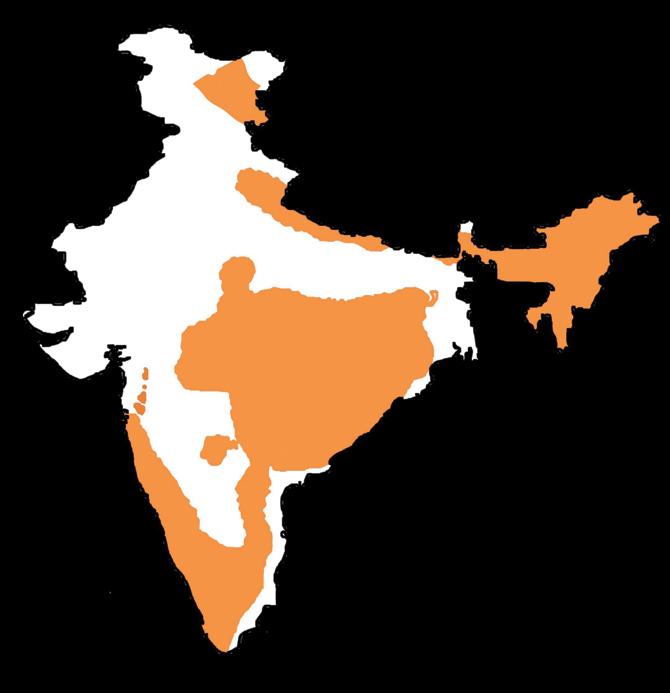This World Wildlife Day, join the crusade to save the dhole or the Asiatic wild dog, a dying-fast breed of wild dogs from the Western Ghats, we bet you didn’t know existed

The dhole is native to central and western India, the North East, and parts of southeast Asia. It�������������������������������¢�����������������������������������������������
![]() On the occasion of World Wildife Day on March 3, Arjun Srivathsa urges you to think of the threat faced by dholes, an endangered species of wild dogs, with a home not too far from Maharashtra.
On the occasion of World Wildife Day on March 3, Arjun Srivathsa urges you to think of the threat faced by dholes, an endangered species of wild dogs, with a home not too far from Maharashtra.

The dhole is native to central and western India, the North East, and parts of southeast Asia. It’s also known as the Asiatic wild dog, Indian wild dog and whistling dog for its unique way of communication. An endangered species, the dholes are estimated to number 1,500 globally. Pic Courtesy/Sudhir Shivaram
Unlike the tiger, rhino or even the great Indian bustard, this Asiatic wild dog rarely figures in our charts of animals with dwindling numbers. Once finding a famous mention in Rudyard Kipling’s The Jungle Book, the dhole is now out of focus, rues Srivathsa, who has spent a while studying the species and its habitat for a PhD at the University of Florida.

Dholes hunt in packs, and go after prey larger than them. Pics/Kalyan Varma
Dhole distress call
He pegs their number at just about 1,000 to 1,500 globally, earning an an endangered status from the IUCN International Union for Conservation of Nature RedList, the international body for nature conversation. “I was part of the team involved in the IUCN assessment on dholes in 2015. It was disheartening because I realised that hardly information was available on them, thus posing a hurdle towards their conservation.”

For long, other than old hunters’ records and some early naturalists’ notes on dhole sightings, little is known about them. In 1981, Dr AJT Johnsingh published his seminal work on dhole ecology based on his study in Bandipur, Karnatka. This was followed by Dr Ullas Karanth’s work on dholes, leopards and tigers in Nagarahole National Park in Karnataka. Until now, these two works are the only major sources of information about the species. “The dholes remain one of the least studied large carnivores in India,” he says.

Orange denotes the distribution of the dhole population in India adapted from IUCN RedList 2015
The Dhole Project that he started this year is an attempt to better understand one of India’s most amazing animals, including their numbers and how much area they need to survive in packs.
Unlike tigers and leopards, dholes do not suffer animal-human conflict since they arent prized for their skin or other organs.
“So, the primary reason for their endangerment appears to be loss of habitat. In India, the Eastern and Western Ghats, central India, and northeast India have the highest dhole population,” says Srivathsa.

Arjun Srivathsa
This, he learnt, while collaborating on a study with the Wildlife Conservation Society-India in the Western Ghats of Karnataka. This was the first rigorous multi-scale ecological study of dholes anywhere in their geographic range.
“We were able to understand how much area they occupied in the region, what drove their distribution and factors behind their limited presence in forests outside protected areas. Our assessments suggested that they are currently found across the 14,000 square km of forest in Karnataka’s Western Ghats, and that spotted deer and sambar, which are their primary prey for food, influenced their presence.
Conservation is key
To engage the common with the conservation project, he has turned to crowdfunding which closes on March 16, a practice common in Europe and the US in the field of animal welfare. “I have been actively involved in science communication and outreach in an attempt to bridge the gap between science and citizens. With The Dhole Project, I’m exploring an innovative way to increase public engagement with science research in India. Through funding a small part of the larger project, those interested in conservation but unable to participate in other ways, can be a part of the research, track the progress we are making and boost conservation effors,” he signs off.
 Subscribe today by clicking the link and stay updated with the latest news!" Click here!
Subscribe today by clicking the link and stay updated with the latest news!" Click here!









